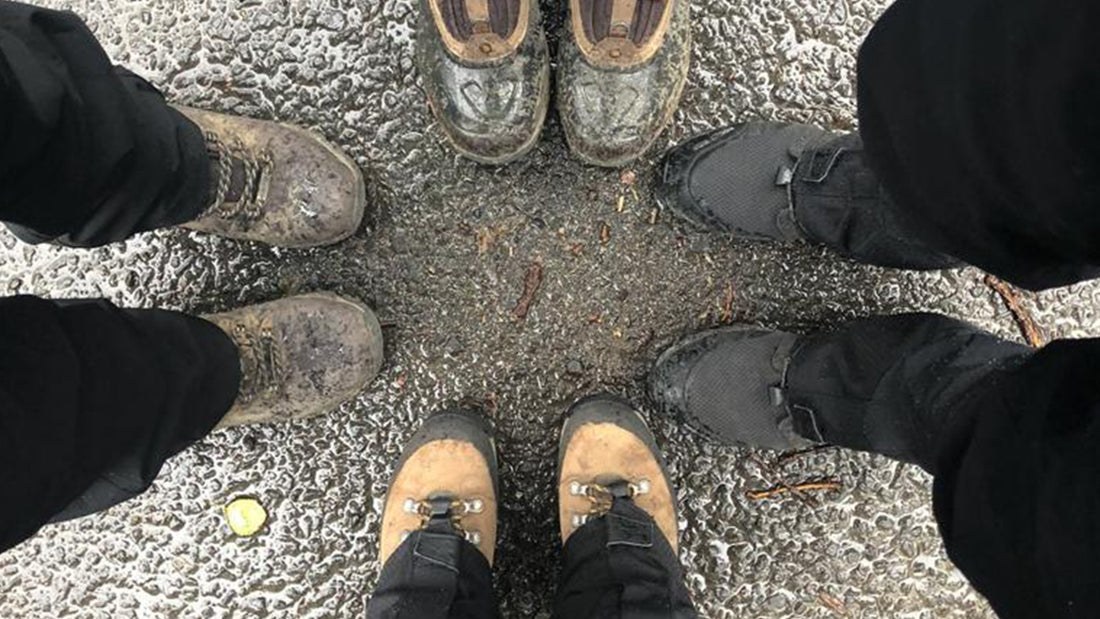
Asking for a friend, what boots do you wear?
Share
by Hannah at Bird Outdoors
So women’s feet aren’t just scaled down men’s feet…?!
After recently going to see an Invisible Women chat with Caroline Criado Perez it was brought to our attention that some shoe manufacturers make women’s shoes by scaling down the men’s version even though, generally speaking, women’s bodies aren’t just small male bodies... we had a look through some old Invisible Women newsletters and dug out the original ‘default male of the week’ article. Read on past the 'default male hangovers' and 'gender data gap of the week' or we've helpfully put it here for you:
“…’women are a lot more dissatisfied with their shoes than men are’ even though they also tend to have lower expectations for their footwear’s comfort, said Geoffrey Gray of Heeluxe, an independent shoe research laboratory. Heeluxe’s data suggests that, in general, women’s shoes are up to 18 percent tighter around the toes, 70 percent tighter around the big toe joint, and 68.4 percent looser in the heel than men’s shoes. And we’re not just talking stilettos — women are suffering in sandals, casual sneakers, even athletic performance shoes.
Many brands, researchers, and individual runners like Daisy Clark, attribute at least some of this discomfort to a long history of unisex shoe design.
Factories construct shoes around a last — a foot-shaped mold of steel, copper, or durable plastic. Historically, they built men’s, women’s, and even children’s sneakers on lasts based on an adult male foot. The colors changed, but the relative dimensions did not. A size 9 men’s last could make a size 10 ½ women’s shoe. That’s how this practice earned its name: shrink it and pink it.
This technique might have evaded scrutiny if male and female feet were identical. But as a 2009 study in the Journal of the American Podiatric Medical Association concluded, “female feet … are not algebraically scaled, smaller versions of male feet, as is often assumed.” Instead, evidence suggests female feet tend to have a higher instep and narrower heel relative to the ball of their foot, while male feet are longer and broader overall. Forcing women into shoes designed for male feet can have serious side effects, Gray said, including dropped arches, bunions, ankle bone soreness (typically when a shoe collar is too high), and blistering.'
This was the bit that REALLY killed me given my on-going achilles issues:
'One of the things that sold me when I tried them on is there’s a lot of padding around the Achilles — around the ankle — and that’s something I’ve never experienced before,” said Jamie Wearne, a recreational hiker in Adelaide, Australia, who posts about her Terradoras on Instagram. “It’s something you don’t realize you need before you experience it.'”
We asked you if you struggled to find well fitted boots/ trainers and if you had managed to find any that you would recommend. We weren't overly surprised to find a massive 84% of you said that you struggled to find boots and trainers that fit you well. However, we did have some suggestions of boots that are working well for some people;

1. inov-8 _ Roclite 286 GTX

2. Hoka _ Speedgoat


4. Hoka _ SKY TOA GOR-TEX

5. Altberg _ Fremington
We’ve said it once and we’ll say it again, head over and sign up to Caroline Criado Perez's newsletter for many many infuriating revelations! And if you haven't managed to read Invisible Women, get it on your Christmas List (or just treat yourself, or I have a copy if anyone would like to borrow it....)
Lastly a big thank you to everyone who took the time out to share their experiences we really appreciate it.
